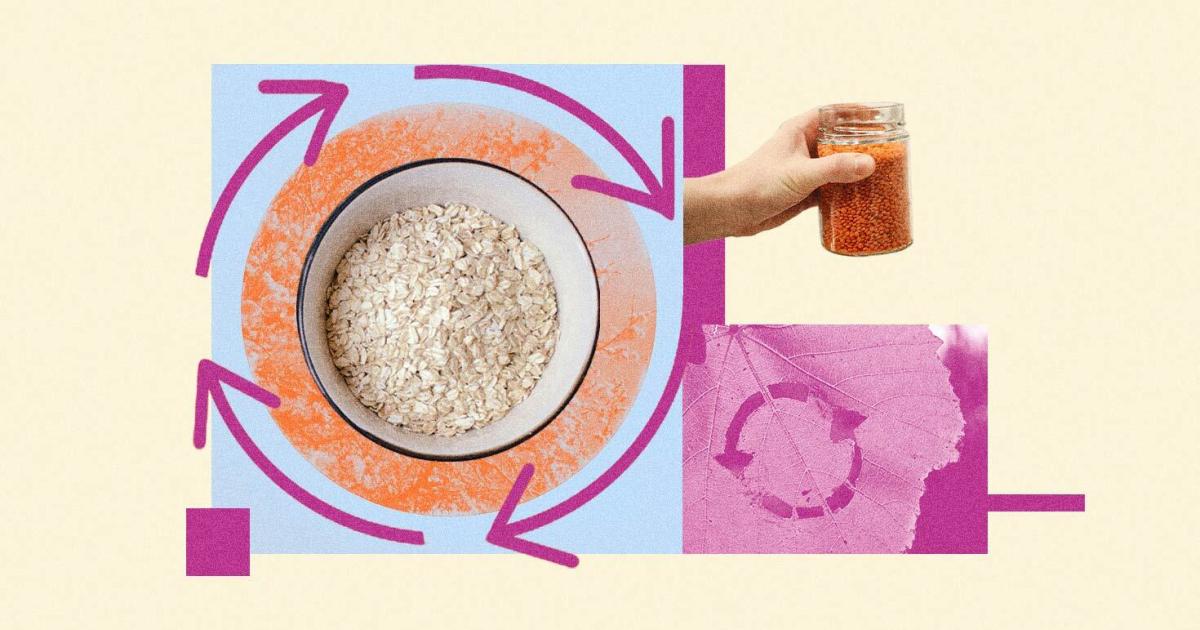12 innovative circular economy startups in 2024 | GreenBiz
12 innovative circular economy startups in 2024 GreenBiz


Achieving a Sustainable Economy through Circular Startups

The Sustainable Development Goals (SDGs) emphasize the importance of advancing circular processes for achieving a sustainable economy. Circular processes, as defined by the Ellen MacArthur Foundation, aim to ensure that materials never become waste and that nature is regenerated.
Introduction
Circular economy entrepreneurs play a pivotal role in driving this change by utilizing technology and innovative business models. This article highlights a dozen of the most innovative circular startups identified by GreenBiz, based on their strength across six criteria:
- Uniqueness of their solution
- Robustness of their business model
- Focus on customer needs
- Demonstrated traction
- Relevant expertise of their team
- Quality of their pitch presentation
In order to be considered, these startups had to be incorporated, have a ready product, and employ at least one person full-time. The selection process involved 65 startups applying to pitch their business to industry leaders at Circularity 24, which took place on May 23 in Chicago. From this pool, a shortlist of five startups were chosen to pitch their ideas.
Promising Circular Startups
-
Upcycling waste
Lucent Biosciences in Vancouver turns waste from peas, lentils, and oats into micronutrient fertilizer.
-
Refillable containers
Myro in New York sells a subscription to refillable body care product containers.
-
Shared vacuums, printers
Tulu in New York offers rental lockers at apartment buildings for printers, vacuums, and other gear.
-
What to do with leftovers
Mi Terro in Los Angeles converts leftovers from food production and paper making into bioplastics.
-
Digital thrift shop
Beni in Santa Barbara, California, uses AI to scour online deals at secondhand clothing retailers.
-
Zero-waste hygiene products
Aruna Revolution in Dartmouth, Nova Scotia, engineers compostable, non-toxic period pads from food and crop waste.
-
Carryout containers
DeliverZero in New York makes reusable to-go containers for food takeout and delivery.
-
More attractive bottles
Magnomer in Framingham, Massachusetts, creates easy-to-remove magnetic coatings to increase bottle recycling rates.
-
Building materials made from fungus
Mycocycle in Bolingbrook, Illinois, taps fungal mycelium to craft low-carbon foam, fiber, and insulation for buildings.
-
Artificially intelligent recycling
Intuitive AI in Hamburg, Germany, provides an AI assistant and analytics to boost recycling.
-
Fleet electrification
Evolectric in Long Beach, California, converts commercial fleets to electric vehicles.
-
Gear matchmaking
LiquiDonate in San Francisco matches unsold and returned products to nonprofits and schools.
These circular startups showcase the diverse range of innovative solutions being developed to address sustainability challenges. By focusing on the SDGs, these startups contribute to creating a more sustainable and circular economy.
SDGs, Targets, and Indicators
| SDGs | Targets | Indicators |
|---|---|---|
| SDG 12: Responsible Consumption and Production | Target 12.5: By 2030, substantially reduce waste generation through prevention, reduction, recycling, and reuse | Indicator 12.5.1: National recycling rate, tons of material recycled |
| SDG 9: Industry, Innovation, and Infrastructure | Target 9.2: Promote inclusive and sustainable industrialization and foster innovation | Indicator 9.2.1: Manufacturing value added as a proportion of GDP and per capita |
| SDG 11: Sustainable Cities and Communities | Target 11.6: By 2030, reduce the adverse per capita environmental impact of cities, including by paying special attention to air quality and municipal and other waste management | Indicator 11.6.1: Proportion of urban solid waste regularly collected and with adequate final discharge out of total urban solid waste generated, by cities |
| SDG 13: Climate Action | Target 13.3: Improve education, awareness-raising, and human and institutional capacity on climate change mitigation, adaptation, impact reduction, and early warning | Indicator 13.3.1: Number of countries that have integrated mitigation, adaptation, impact reduction, and early warning into primary, secondary, and tertiary curricula |
1. Which SDGs are addressed or connected to the issues highlighted in the article?
SDG 12: Responsible Consumption and Production
The article discusses circular economy entrepreneurs who are driving sustainable consumption and production by finding innovative solutions to reduce waste and promote reuse.
SDG 9: Industry, Innovation, and Infrastructure
The article highlights startups that are using technology and innovative business models to drive circular processes, contributing to sustainable industrialization and fostering innovation.
SDG 11: Sustainable Cities and Communities
The article mentions startups that offer solutions for waste management in cities, addressing the environmental impact of urban areas and promoting sustainable communities.
SDG 13: Climate Action
While not explicitly mentioned in the article, the circular economy and sustainable consumption and production contribute to climate action by reducing greenhouse gas emissions and promoting resource efficiency.
2. What specific targets under those SDGs can be identified based on the article’s content?
Target 12.5: By 2030, substantially reduce waste generation through prevention, reduction, recycling, and reuse.
The startups mentioned in the article are working towards this target by upcycling waste, offering refillable containers, converting leftovers into bioplastics, making reusable to-go containers, and creating building materials from fungus.
Target 9.2: Promote inclusive and sustainable industrialization and foster innovation.
The startups mentioned in the article are driving innovation in circular processes and sustainable consumption and production, contributing to inclusive and sustainable industrialization.
Target 11.6: By 2030, reduce the adverse per capita environmental impact of cities, including by paying special attention to air quality and municipal and other waste management.
The startups mentioned in the article offer solutions for waste management in cities, addressing the adverse environmental impact and promoting sustainable waste management practices.
3. Are there any indicators mentioned or implied in the article that can be used to measure progress towards the identified targets?
The article does not explicitly mention indicators, but the following indicators can be used to measure progress towards the identified targets:
Indicator 12.5.1: National recycling rate, tons of material recycled
This indicator can measure the progress in reducing waste generation through recycling and reuse, as well as the effectiveness of circular economy initiatives.
Indicator 9.2.1: Manufacturing value added as a proportion of GDP and per capita
This indicator can measure the progress in promoting inclusive and sustainable industrialization by assessing the contribution of manufacturing to the economy.
Indicator 11.6.1: Proportion of urban solid waste regularly collected and with adequate final discharge out of total urban solid waste generated, by cities
This indicator can measure the progress in reducing the adverse environmental impact of cities by assessing the effectiveness of waste management systems in urban areas.
4. SDGs, Targets, and Indicators
| SDGs | Targets | Indicators |
|---|---|---|
| SDG 12: Responsible Consumption and Production | Target 12.5: By 2030, substantially reduce waste generation through prevention, reduction, recycling, and reuse | Indicator 12.5.1: National recycling rate, tons of material recycled |
| SDG 9: Industry, Innovation, and Infrastructure | Target 9.2: Promote inclusive and sustainable industrialization and foster innovation | Indicator 9.2.1: Manufacturing value added as a proportion of GDP and per capita |
| SDG 11: Sustainable Cities and Communities | Target 11.6: By 2030, reduce the adverse per capita environmental impact of cities, including by paying special attention to air quality and municipal and other waste management | Indicator 11.6.1: Proportion of urban solid waste regularly collected and with adequate final discharge out of total urban solid waste generated, by cities |
| SDG 13: Climate Action | Target 13.3: Improve education, awareness-raising, and human and institutional capacity on climate change mitigation, adaptation, impact reduction, and early warning | Indicator 13.3.1: Number of countries that have integrated mitigation, adaptation, impact reduction, and early warning into primary, secondary, and tertiary curricula |
Copyright: Dive into this article, curated with care by SDG Investors Inc. Our advanced AI technology searches through vast amounts of data to spotlight how we are all moving forward with the Sustainable Development Goals. While we own the rights to this content, we invite you to share it to help spread knowledge and spark action on the SDGs.
Fuente: greenbiz.com

Join us, as fellow seekers of change, on a transformative journey at https://sdgtalks.ai/welcome, where you can become a member and actively contribute to shaping a brighter future.







